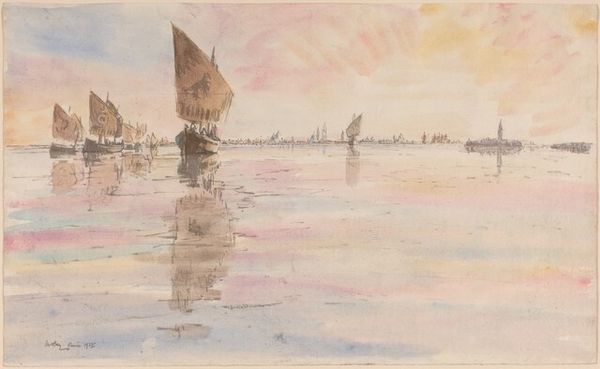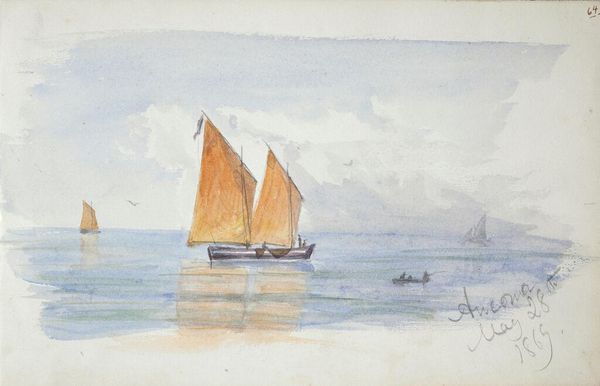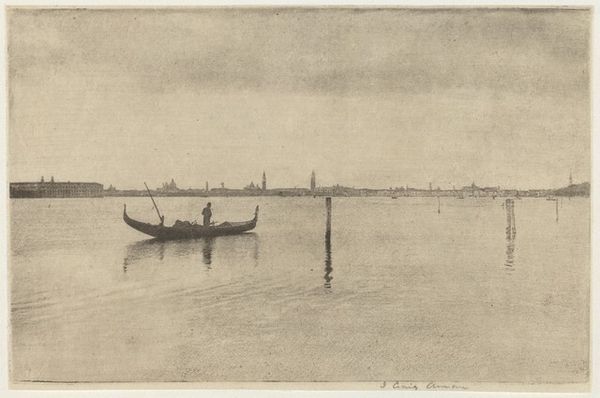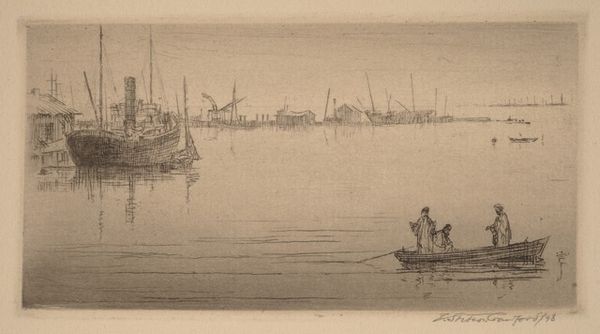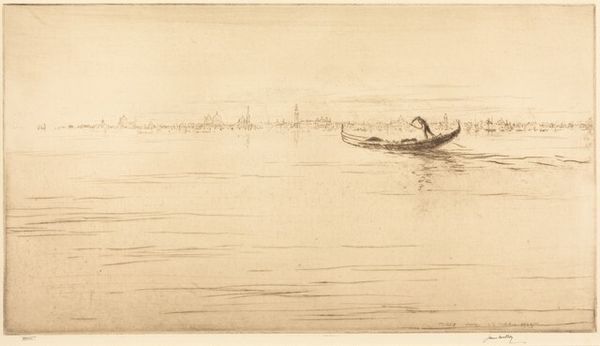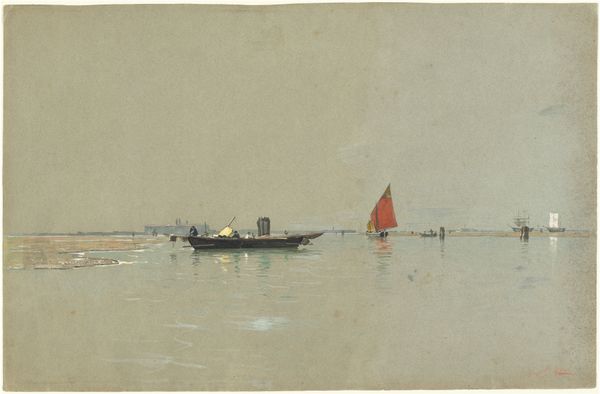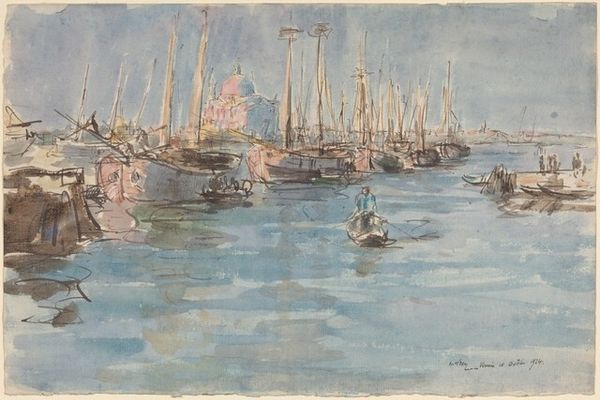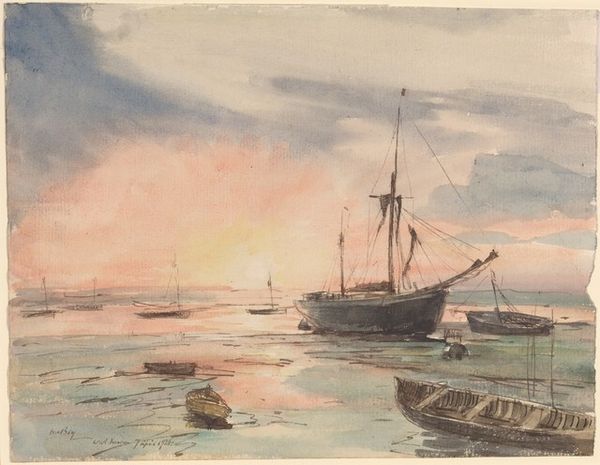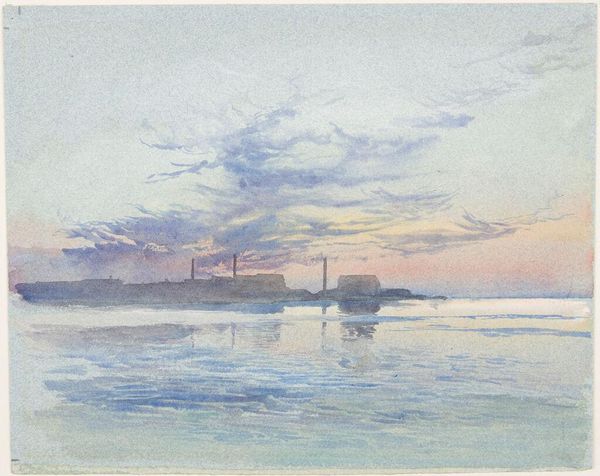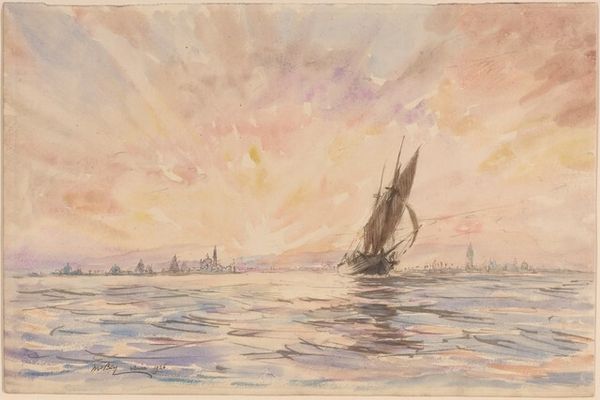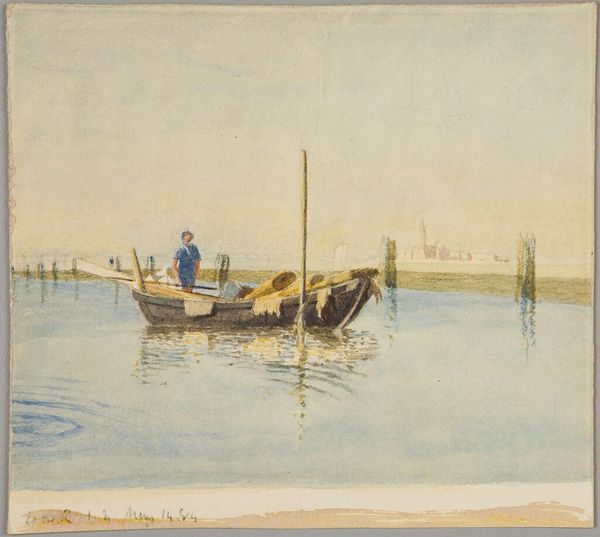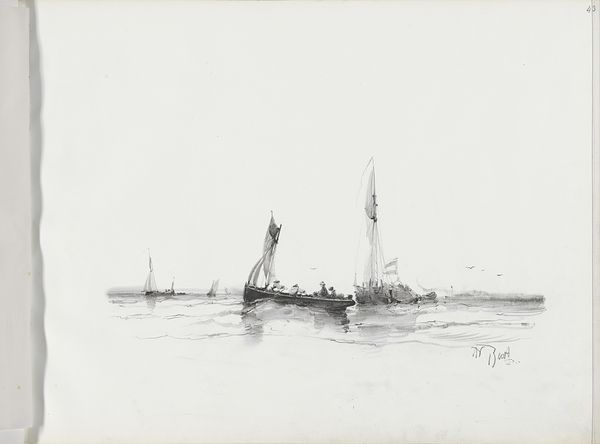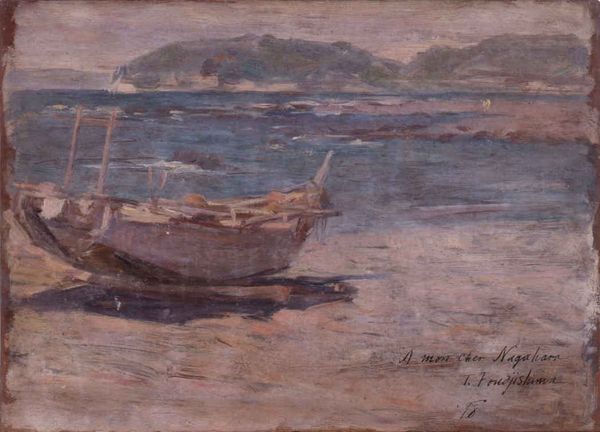
Dimensions: overall (approximate): 28 x 43.7 cm (11 x 17 3/16 in.)
Copyright: National Gallery of Art: CC0 1.0
Editor: We're looking at James McBey's "Laguna" from 1925, rendered with watercolor and pencil. The blues and pinks give it a dreamlike quality, almost fading into memory. What can you tell me about it? Curator: It's fascinating to consider this work within the broader narrative of Venice's depiction in art and its evolving social function. The romantic image of Venice, largely perpetuated by artists and then tourists, often overshadows the city’s complex socio-political history. Does McBey’s image engage with this constructed narrative, or subvert it? Editor: That's a great point, it does feel a bit romanticized with the soft colors. But what kind of a role could art have played for Venice? Curator: Think about the power dynamics at play. Venetian paintings, particularly landscape scenes, became commodities. They were consumed by wealthy travelers, shaping perceptions and reinforcing Venice as a destination for the elite. Artists became complicit in this cultural branding, impacting the city’s identity and economy. Do you see evidence of that "branding" here? Editor: I see it in the way the gondola is centrally featured. Like it's an expectation. A classic image. Curator: Exactly. And how does McBey either reinforce or challenge those existing visual tropes of Venetian life that were becoming so iconic, even from the late 19th century onward? Does it perpetuate an ideal, or hint at the lived reality behind the pretty surface? Editor: This has completely changed my perception. It feels less like a simple landscape now, and more like a reflection on the image of a place. Curator: Precisely! By examining these historical currents, we uncover the multifaceted nature of seemingly straightforward depictions, acknowledging their broader cultural resonance.
Comments
No comments
Be the first to comment and join the conversation on the ultimate creative platform.
